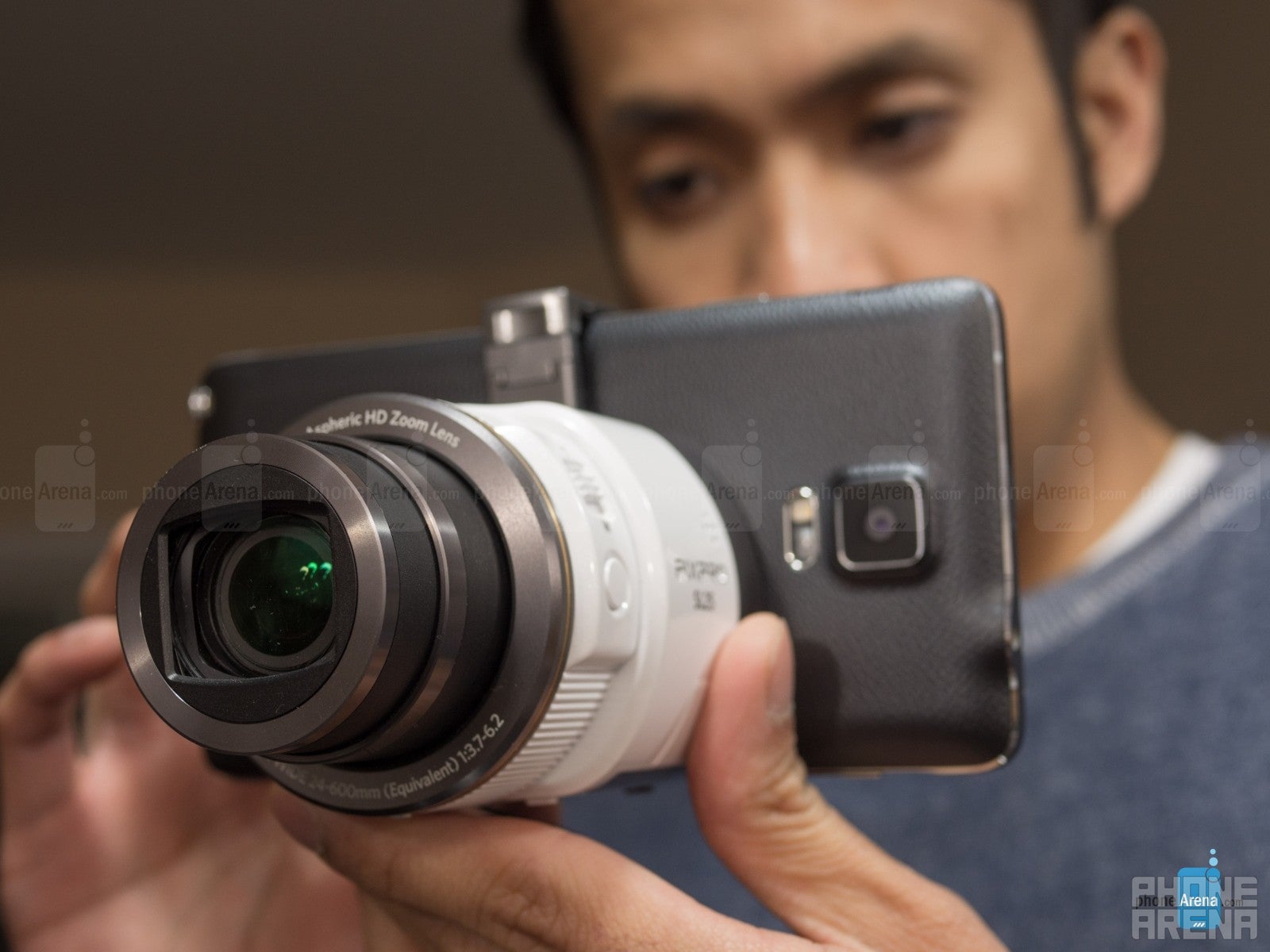Kodak PIXPRO SL25 Review

Introduction
The popularity of point-and-shoot cameras have slowly dwindled in the last several years due to the emergence of smartphones, partly because of the versatility, convenience, and solid quality they offer with their cameras. However, companies that earned their reputation in the camera space have been investing their time in another emerging area – the smartphone attachable lens. It’s a promising venture that some companies believe will be picking up steam, evident by the models we’ve checked out from Sony, like the Sony Cyber-shot DSC-QX10 and DSC-QX100.
Another company that’s gambling on seeing this new product segment gain steam is Kodak. Similar to Sony’s offering, Kodak’s attachable smartphone lens, the Kodak PIXPRO SL25, aims to broaden things with its 16-megapixel 1/2.3” BSI CMOS sensor and long 25x optical zoom range. Naturally, it requires a smartphone for users to fully reap all the benefits of its features. Surely, its wider features set give the PIXPRO SL25 more versatility, but it needs to produce solid results to make it a potential candidate for serious photographers.
Packaging contains:
- Rechargeable Li-ion battery
- AC adapter
- Wrist strap
- microUSB cable
- Quick start guide
Design
It’s an odd looking thing to those not familiar with this kind of product segment, but it’s still pretty bulky in size.
If you haven’t seen an attachable smartphone lens before, then you’ll probably find the Kodak PIXPRO SL25 a bit strange looking at first. Quite simply, it’s just the lens portion of a traditional digital camera – though, it’s quite hefty in size. Indeed, it’s not something that’ll stay discrete in our pockets, but its immense size is due to the 25x lens that’s stuffed into the casing. With such a long range in tow, it’s necessary for the PIXPRO SL25 to flaunt such a hefty package.
Constructed out of sturdy plastic, it doesn’t particularly exude any premium qualities with its design, but rather, it exhibits a somewhat rugged feel. Now, it’s made especially more profound as we hold the thing in our hand, seeing that it’s significantly heavier than the biggest of smartphones – tipping the scales at a heavy 210 grams! We wouldn’t want to drop this straight onto the concrete ground, obviously, but its tough plastic body assures us that it’s resistant enough to endure some minor falls.
Looking around the body of the Kodak PIXPRO SL25, we find its dedicated power button, zoom toggle, and two-level shutter key. Hidden in a compartment on one of its sides, its microUSB port, lithium-ion battery, and microSD card slot are safely tucked away behind a plastic cover. Rounding things out, it features these adjustable clips that can accommodate and keep in place all sorts of smartphones – even phablets like the Samsung Galaxy Note 4. There’s also a standard sized mount on its underside to allow us to attach it to a tripod.
At the center of it all is the 16-megapixel 1/2.3” BSI CMOS sensor, which retracts outwards when it’s powered on. Clearly, it has some advantages over the camera sensors in today’s smartphones – such as its wide 25mm field and 12-element lens construction. On the other, though, all of the camera gear in its package doesn’t make it compact. Of course, the PIXPRO SL25 is meant to work hand-in-hand with a smartphone, but it still can be operated independently. However, it’s only able to capture snapshots, with no way to shoot video.
Connectivity

Relying on this particular mode for connectivity, there’s a little bit of latency between what the camera is seeing and what’s actually being shown on our connected smartphone. It’s approximately a second in most instances, but when we’re using it in places where Wi-Fi connectivity is being shared amongst numerous devices, it can increase to a level that becomes bothersome.
Kodak PIXPRO Remote Viewer App
In this review, we’re using the Kodak PIXPRO SL25 with a Samsung Galaxy Note 4, but the iOS and Android apps, for the most part, share the same functionality and layout. After establishing the connection with the Note 4, we’re give two options upon running the app – playback and remote viewfinder.
Essentially, the Note 4 becomes the camera’s viewfinder, giving us visibility in what the camera lens is seeing. Naturally, we can attach the Note 4 to the PIXPRO SL25 using its adjustable clips, but the beauty in this setup is that we can use the PIXPRO SL25 freely. This makes for some interesting compositions, seeing that we can place the PIXPRO SL25 somewhere and take shots remotely. It even makes for a swell selfie shooting experience, thanks in part to its wide 25mm view – ensuring that it can accommodate more than us in the shot.
The majority of the app is left for the viewfinder, but along the sides, we have buttons and control for various things. Sure, we can use the shutter key and zoom toggle switch on the unit itself, but we can also access them through the app. Unfortunately, you’d think that the app would be rich with various shooting modes and settings, but it’s not. In fact, there are only a total of 4 shooting modes to select from – Program AE, Shutter Priority, Face Beautifier, and Auto Scene. There are other options to choose from as well, like setting the white balance, putting on a timer, and choosing the resolution capture, but it really would’ve been more beneficial for it to have a full manual option – as well as some other fun shooting modes; like panoramic or action shots.
Performance
Great quality with outdoor scenery shots! However, latency issues become problematic under low light.
One would think that the Kodak PIXPRO SL25 is more equipped at taking photos than all smartphones, but we should note that it’s packing along a 1/2.3” sized CMOS sensor. That’s not impressive amongst dedicated cameras, especially we can find comparably sized sensors in smartphones like the Sony Xperia Z3 and Meizu MX4, but the PIXPRO SL25’s main advantage, naturally, is the extended 25x zoom range it offers. That alone beats out the likes of the Samsung Galaxy Camera, Galaxy S4 Zoom, and the Galaxy K Zoom.
So, what’s the quality like from this 16-megapixel snapper? Well, you can be the judge of that by taking a sneak peek at some of our samples. One of the biggest obstacles in using this type of camera is the total amount of time it needs to snap something, which can be a long time depending on the setting. Much like anything else out there, the best shots come from brightly lit areas outdoors – where details pop with ample sharpness, dynamic range is handled better, and colors have a proper tone to them. Using its long zoom in an effective manner, you can even frame some outstanding looking shots that have enough of that out-of-focus effects in the background to give it a professional look.
Indoors under artificial lighting, or generally anywhere lighting is minimal, the Kodak PIXPRO SL25 is a slouch in delivering shots. Above all, it’s the amount of times photos come out blurry due to the long delay between pressing the on-screen shutter key and it actually taking the shot. In addition, images are significantly softer in tone – while noise becomes more problematic. The best tip we can offer, even though it offers image stabilization, is to simply place the PIXPRO SL25 on a tripod or level surface to capture something. Generally speaking, images look better than just free-styling it with our hands.
With its 1080p video capture, the results pretty much follow what we see with its still image quality – so that means the best results come from bright, outdoor settings. Image stabilization becomes more valuable when it comes to recording video, seeing that the longer zoom we go through, it doesn’t become too susceptible to shakiness.
Battery
In our experience, the unit’s removable 880 mAh battery is able to churn out approximately 45 minutes of battery life when shooting 1080p video at 30FPS. That’s not too bad if you’re looking to do some light recording when you’re out, but it’s certainly the kind of thing that requires charging in between uses.
Conclusion
The Kodak PIXPRO SL25 is the company’s highest priced smartphone attachable lens at the moment, where it’s slapped with an MSRP of $299. They do have another model, the SL10, which features a 10x zoom lens and is priced less at $230. Honestly, it’s a tough call on whether you should fork over the money to pick up the SL25 – more so when many smartphones deliver just as good, and if not, better results. At the same time, there are also the numerous other camera-centric smartphones out there to think about, like the Nokia Lumia 1030 and Samsung Galaxy K Zoom.
Without a doubt, the biggest advantage of the Kodak PIXPRO SL25 is its long 25x zoom range, which bests anything that our smartphones offer. In fact, the only one to come close to it is the Samsung Galaxy Camera and its 21x zoom. However, the Galaxy Camera is more of a camera first with the functions of a smartphone attached to it – and not the other way around. Another thing to think about is also the various super zoom cameras out there, which rival and even eclipse the range of the PIXPRO SL25. However, with those options, they’re considerably more bulky in size than this.
Superficially, there are several things to think about if you’re interested in picking this up. Most smartphones rival its image quality, but lack its extended range. On the flip side, though, smartphone cameras are more versatile and compact – while some are even greeted to a generous set of shooting modes and features. The PIXPRO SL25 is more than capable of taking some amazing photos, and we can get really close to things without having to do it physically, but do you really want to be carrying something as bulky like it around in your pockets?













Things that are NOT allowed: